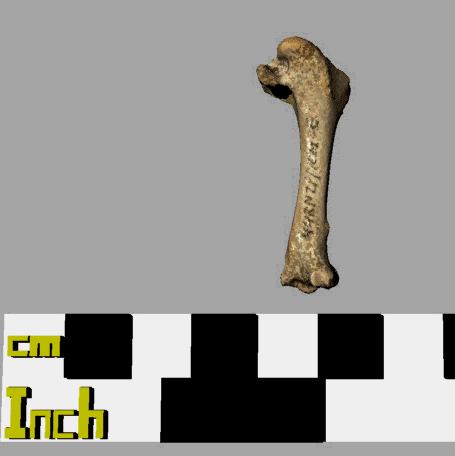
On the 100th anniversary of the extinction of the passenger pigeon, the Virtual Curation Laboratory at Virginia Commonwealth University has just posted the results of a project to create 3D models of passenger pigeon bones. Most of the source bones were excavated from an archaeological site in Virginia. Its a fantastic idea that will make easier for everyone, including scientists trying to identify passenger pigeon at archaeological and paleontological sites.
There are already hundreds of prehistoric sites where this bird has been identified, but it is surprisingly less common to have passenger pigeon identified from historic period archaeological sites. One factor complicating their identification in historical sites is the challenge of distinguishing passenger pigeon from the similarly sized rock dove, or common pigeon (Columba livia), that was introduced to North America in the 1600s. Often when pigeon bones of a certain size are found in historic period sites, they are classified only as Columbidae, or pigeon. It would be nice to see the VCL also produce 3D models of the rock dove, so zooarchaeologists without access to a comprehensive faunal collection might be better able to distinguish these two species.
For more information, see the VCL website.